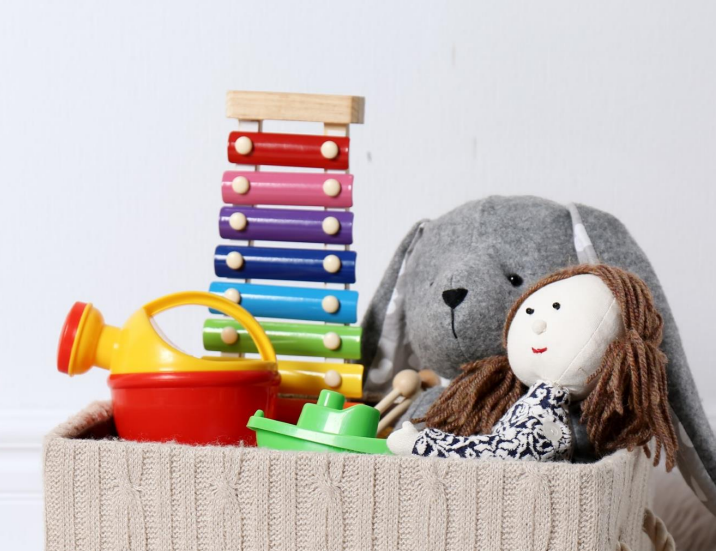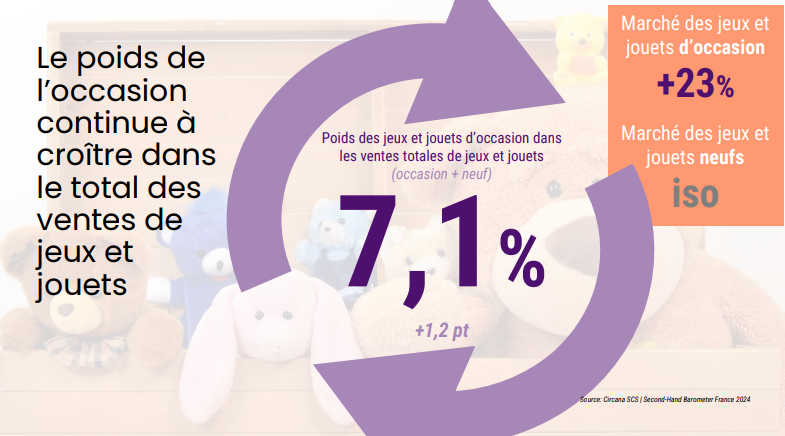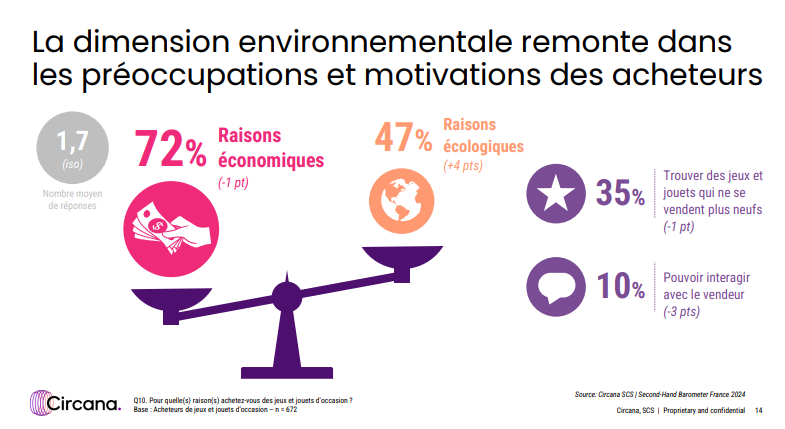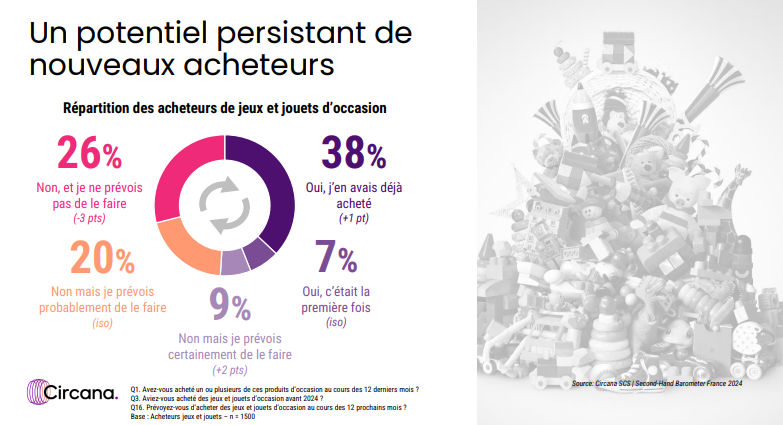For the third year running, Circana and Ecomaison have jointly produced an analysis dedicated to the second-hand toys and games market, to better understand the sector's trends, the challenges of reuse and the evolution of second-hand. Explanations with Matthieu Goutti, head of the toys sector at Ecomaison, followed by an interview with Mickael Blot, Retail Analytics Director EMEA (Europe Middle East Africa) at Circana.
Committed to a more ambitious circular economy, Ecomaison keeps a close eye on developments in the French reuse market. It was therefore natural for Ecomaison to work with Circana to create the Used Toys and Games Barometer, after two years of analyzing the sector. As Matthieu Goutti points out, "this barometer helps us to build a development strategy for the reuse of toys and games. In this fast-growing market, it's important to know what's happening in terms of volumes, value and consumer trends." In 2024, for example, the market grew by 23% in value and 20% in volume.

While the growth of the second-hand market affects many sectors, such as textiles and electronics, it is essential to better understand the specificities of the second-hand toy and game market, as well as the new expectations of consumers. This is exactly what Ecomaison is looking for in this barometer: to track the determinants of this new form of consumption for these products every year with Circana.
Matthieu Goutti points out that Ecomaison already invests heavily in supporting solidarity-based reuse for the market's historical players - resourcerie, recycleries and associations - with a dedicated fund. " Our aim with this barometer is to find other tools and growth vectors, so that as many toys as possible find a second life with new families", he insists.
Four questions for Mickael Blot (Circana)
Why have Ecomaison and Circana pooled their expertise to produce this barometer?
Ecomaison is the guarantor of collection, recycling and best practices in terms of managing the second life of toys and games. As the eco-organization that sets the course, it wanted to have a global vision of the second-hand toy and game market. At Circana, as a toy market panelist, we had an interest in tracking new consumer trends, complementing our analyses of the new toy market with those of second-hand toys.

"Ecomaison is the guarantor of collection, recycling and best practices in terms of managing the second life of toys and games."
Michael Blot (Circana)

How do you explain the rise of the toys & games segment on the second-hand market in recent years?
It shows that consumers are becoming more aware of the environmental aspect, which reinforces the main motivation, i.e. price. Second-hand products are also increasingly trusted, thanks to positive word-of-mouth. It has also become more common and acceptable than before to offer second-hand toys and games.

What are the profiles of people who choose second-hand toys and games?
Almost every segment of the population is involved, starting with historic buyers such as collectors (10%) and grandparents (29%), who are accustomed to finding toys and games at markets, flea markets and so on. Large families (7%) have taken up the idea for financial reasons, while ecologically-minded individuals (9%) use it above all to reduce their environmental footprint. The most recent categories are the "opportunists" (29%), ready to seize bargains, and the "unabashed". The latter (16%), who tend to be younger, consider the act of buying second-hand as natural. Many of them are tomorrow's parents, and therefore the core target of toy and game retailers.

What obstacles need to be overcome to increase sales of second-hand toys and games?
The main obstacle to the growth of second-hand toys is the lack of confidence in product quality. Physical players have an opportunity by reconditioning toys and upgrading them with simple packaging to reassure buyers. However, they also face the challenge of competing with the very wide online offer, especially in the face of children's specific demands. We need to reflect on the real needs of consumers in order to adapt the model. Ecomaison, in conjunction with solidarity-based re-employment and retailers, could play a key role in facilitating in-store sales.
